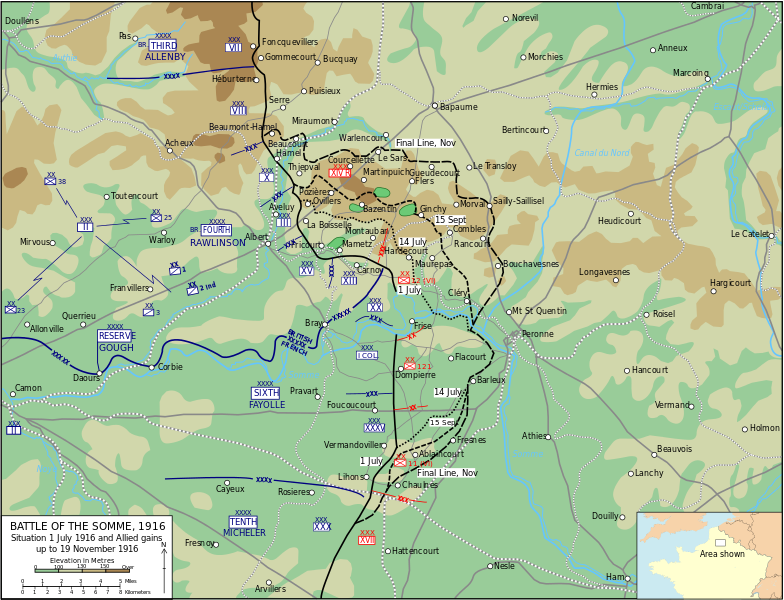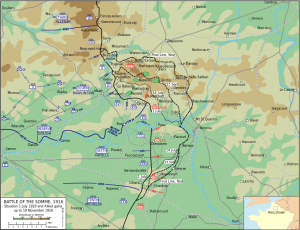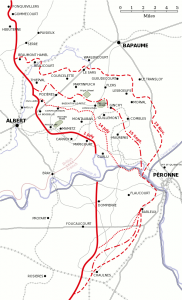The Battle of the Somme was fought between July and November 1916 along the Somme Valley on the Western Front in France. It was the principal Anglo-French offensive of 1916, intended to destroy Germany’s reserves of manpower and relieve pressure on the French Army at Verdun.
After a week-long bombardment of German lines Allied forces were confident that they could easily capture the German trenches. At 7.30am on 1 July 1916 General Sir Douglas Haig led 100,000 British and French troops in an attack along a 30km long front north and south of the river Somme. By the end of the day almost 60,000 British soldiers had been killed, wounded or were missing in action – the country’s heaviest ever casualty toll in a 24 hour period. 1 July 1916 became known as “the blackest day in British military history”.
The attack was effected in broad daylight with no attempt at concealment. The advancing Allies, armed only with rifles and bayonets, were systematically mown down by German machine guns. The offensive rapidly became a battle of attrition as British and French troops made marginal gains against the enemy but repeatedly fail to break through the German front.
The major contribution of Australian troops to the Somme offensive was at Pozieres and Mouquet Farm between 23 July and 3 September, and near Flers in November.
The Battle of the Somme continued for 141 days, until exhaustion and the cloying mud of a particularly wet autumn caused the offensive to be abandoned. When hostilities ceased on 18 November 1916 casualties on both sides numbered more than 1,200,000. Allied forces had gained just 12 kilometres of territory.



